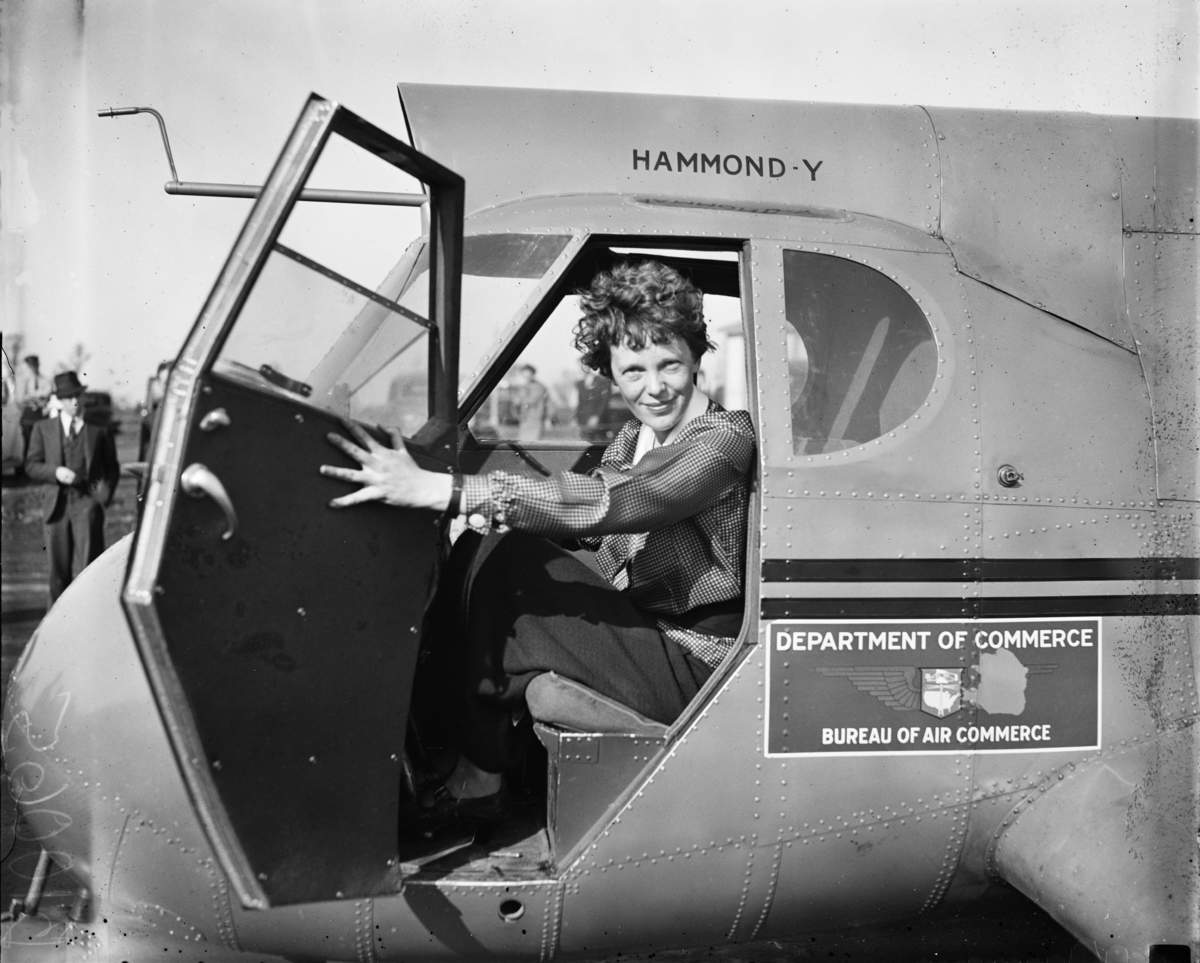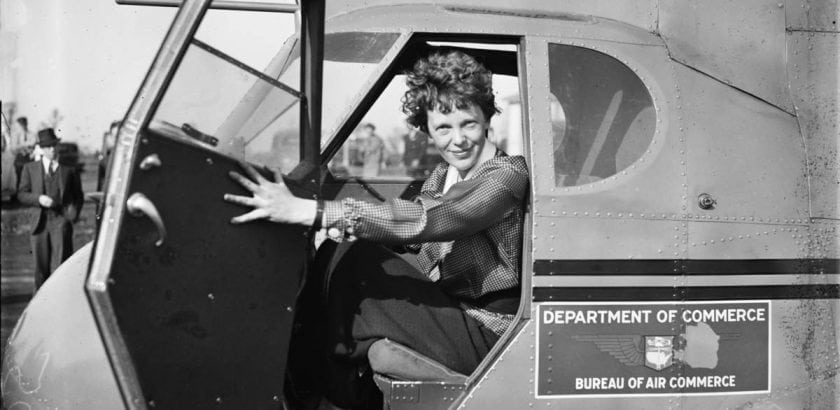Intimate Tickles Thought You Might Be Interested
Published: Tue, 24 Jul 2018 05:00:00 +0000
View Original Article

Aviator Amelia Earhart was born on today’s date in 1897, in Atchison, Kansas. She championed the advancement of women in aviation and women’s rights in general. She set many flying records, such as being the first person ever to fly from Hawaii to the US mainland and being the first woman to fly across the Atlantic. Although her plane was lost during her attempt to circumnavigate the globe, she left a legacy of inspiration and bravery not only for women but for all those who seek adventure and hope to change the world.
From a young age, Earhart was tomboy: she climbed trees, hunted, played basketball, and took an auto repair class. She also kept a scrapbook of women who had achieved success in male-dominated fields. When in her late teens, as World War I raged, she worked as a nurse’s aide in a military hospital in Toronto. It was then when she first got a glimpse of aviation when she watched pilots of the Royal Flying Corps train at a Toronto airfield.
On December 28, 1920, Frank Hawks took Earhart on her first flight. She was immediately hooked, and later said, “By the time I had got two or three hundred feet off the ground, I knew I had to fly.” Just days later, on January 3, 1921, she began flying lessons, being taught by Neta Snook. Six months after beginning her lessons, she purchased her first plane, a used Kinner-Airster. “The Canary” was the name she gave to her new bright-yellow two-seater biplane. Later that year, in December, she passed her flight test and received a National Aeronautics Association license. By October of the following year, she had set her first record, using The Canary to rise to an altitude of 14,000 feet, going higher than any other woman had before her.
In 1928, she received a phone call asking if she would like to be the first woman to fly across the Atlantic. Although she would not be at the controls of the plane, she still answered with a resounding “Yes!” On June 17, 1928, she accompanied pilot Wilmer “Bill” Stultz and co-pilot and mechanic Louis E. “Slim” Gordon, aboard a Fokker F7 plane named “Friendship.” They flew out of Trepassey Harbor, Newfoundland, and arrived in Burry Port, Wales in 20 hours and 40 minutes. Three women pilots had died within the previous year attempting to do what Earhart had done, and the flight crew came back to a ticker tape parade in New York City and were greeted by President Calvin Coolidge at the White House. Earhart published 20 Hours, 40 Minutes that fall, and toured and lectured around the country.
In August 1929, Earhart took third place in a transcontinental air race called the Cleveland Women’s Air Derby, which was referred to as the Powder Puff Derby by Will Rogers. Afterward, she helped start the Ninety-Nines, an international organization to help with the advancement of female pilots. She became its first president.
She soon switched from an Avro Avian plane to a Lockheed Vega. In June of 1930, she set multiple speed records. Not only did Earhart set records with planes, but on April 8, 1931, she used a Pitcairn autogyro to set the autogyro altitude record at 18,415 feet, a record that stood for 84 years.
It was also in 1931 that Earhart married George Putnam. She called their marriage a “partnership” in which they had “dual control.” Together they planned for her to become the first woman—and only second person, after Charles Lindbergh—to fly solo across the Atlantic Ocean. On May 20, 1932, five years to the day after Lindbergh began his transatlantic journey, Earhart took flight in her red Lockheed Vega 5B airplane from Grace, Newfoundland, and headed towards Paris. Because of weather conditions, she had to land in a field in Londonderry, Ireland, after flying for 14 hours and 56 minutes. After her flight, President Herbert Hoover gave her a gold medal from the National Geographic Society, and Congress gave her the Distinguished Flying Cross—which had never before been given to a woman. She wrote The Fun of It about her flight.
Over August 24 and 25 of the same year, she became the first woman to fly nonstop coast to coast, from Los Angeles, California, to Newark, New Jersey, in 19 hours and 5 minutes. The following July she made the same flight in 17 hrs and 7 minutes. On January 11, 1935, she became the first person to fly solo from Hawaii to the US mainland, flying from Honolulu to Oakland. That same year she also became the first person to fly from Mexico City to Newark.
By 1937, Earhart had a goal be the first woman to fly around the world. After flying from Oakland to Miami, Earhart and her navigator, Fred Noonan, left Miami on June 1, in Earhart’s twin-engine Lockheed 1OE Electra plane, beginning what was intended to be a 29,000-mile flight. They flew to South America, to Africa, to India, and then to Southeast Asia. They landed in Lae, New Guinea, on June 29, after having flown 22,000 miles.
On July 2, they headed toward Howland Island, a small island in the mid-Pacific, and had just 7,000 miles left to fly before they would complete their mission. They had radio contact with the United States Coast Guard Cutter ITASCA, which was stationed right by the island. In addition, two other US ships were also markers along the flight route and kept all their lights on. Skies were overcast with intermittent rain showers, which made celestial navigation—Noonan’s preferred method—difficult to do. Earhart communicated with ITASCA about the weather, and radio transmissions eventually became faint and interrupted with static. Earhart radioed, “We must be on you, but we cannot see you. Fuel is running low. Been unable to reach you by radio. We are flying at 1,000 feet.” She made her last communication with the ship 63 minutes later and was never heard from again.
A rescue attempt was authorized by President Franklin Roosevelt and quickly began. After spending $4 million and search 250,000 square miles of ocean, the US government called off the search on July 19. Earhart and Noonan were declared lost at sea.
There are many theories as to what happened to Earhart, but her fate is still unknown. The official position of the US government is that she crashed into the Pacific Ocean, after running out of gas while searching for Howland Island. Recent expeditions of this area have not turned up any clues. The International Group for Historic Aircraft Recovery (TIGHAR) believes Earhart and Noonan went off course and landed 350 miles to the southwest of Howland Island, on Gardner Island, which is now known as Nikumaroro. TIGHAR believes they may have lived there for days or weeks as castaways, before dying. Expeditions have found some artifacts to back up the theory, but nothing has been definitive. Conspiracy theories also abound, such as that they were spies for the Roosevelt administration and gained new identities when they returned to the US, or that they were captured by the Japanese. A photograph surfaced in 2017 that purported to show Earhart, Noonan, and her plane after the flight, but was later debunked.
Amelia Earhart once wrote a letter to her husband, with thoughts on if the flight she was about to take happened to be her last flight. “Please know I am quite aware of the hazards,” she said. “I want to do it because I want to do it. Women must try to do things as men have tried. When they fail, their failure must be but a challenge to others.” This was the spirit of Amelia Earhart, and why we celebrate Earhart today.
Amelia Earhart Day is being observed today! It has always been observed annually on July 24th.
